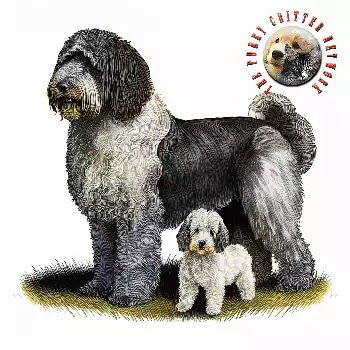Within family settings, the Nederlandse Schapendoes establishes complex and deeply satisfying relationships with household members, drawing upon their centuries of close cooperation with humans to create bonds that go far beyond simple pet-owner relationships. These dogs integrate themselves so thoroughly into family life that they often become the emotional center of household activities, serving as both entertainment and comfort while maintaining their instinctive role as gentle guardians and organizers of family dynamics.
The breed's approach to family relationships demonstrates remarkable emotional intelligence, with individual dogs often developing unique interaction styles with different family members based on their understanding of each person's personality, needs, and preferences. They may be more playful and energetic with children, calmer and more attentive with elderly family members, and more responsive to training and work activities with adults who assume leadership roles in the household.
With children, Nederlandse Schapendoes display exceptional patience and gentle behavior, often seeming to understand intuitively that young humans require special consideration and protection. Their herding instincts may manifest as gentle guidance of children's activities, positioning themselves between children and potential hazards, or using subtle body language to discourage unsafe behaviors. Many families report that their Nederlandse Schapendoes serves as an unofficial babysitter, alerting adults when children are engaged in activities that require supervision.
The breed's integration into family routines reflects their intelligence and desire to be useful members of the household. They quickly learn daily schedules and often position themselves to participate in or facilitate regular activities such as morning walks, meal preparation, homework time, and bedtime routines. Their presence during these activities is typically calm and supportive rather than demanding or disruptive, demonstrating their understanding of appropriate family dynamics.
Nederlandse Schapendoes often serve as emotional barometers within families, responding sensitively to household stress levels and adjusting their behavior to provide comfort and stability during difficult periods. They seem to possess an intuitive understanding of when family members need space versus when they need companionship, adapting their approach accordingly. This emotional sensitivity makes them valuable support systems during family transitions, illnesses, or other challenging circumstances.
In multi-generational households, the breed demonstrates remarkable adaptability to varying activity levels and interests. They may engage in vigorous play with teenagers, provide gentle companionship to grandparents, and serve as patient training partners for family members learning dog handling skills. Their ability to match their energy and interaction style to different family members makes them particularly suitable for diverse households with varying needs and capabilities.
The breed's relationship with family visitors and guests reflects their natural protective instincts balanced with their generally friendly disposition. They typically serve as excellent hosts once proper introductions are made, often taking on unofficial duties such as greeting guests, providing entertainment, or helping to facilitate social interactions. Their ability to read social situations and respond appropriately makes them valuable ambassadors for their families in social settings.
Family activities and outings become significantly more enjoyable with Nederlandse Schapendoes participation, as these dogs thrive on being included in adventures and new experiences. Their enthusiasm for family activities, combined with their good behavior in public settings, makes them excellent companions for hiking, camping, visits to dog-friendly establishments, and family gatherings. Their presence often enhances family bonding as members work together to meet their dog's needs for exercise, training, and socialization while enjoying the many benefits of life with this remarkable Dutch breed.

